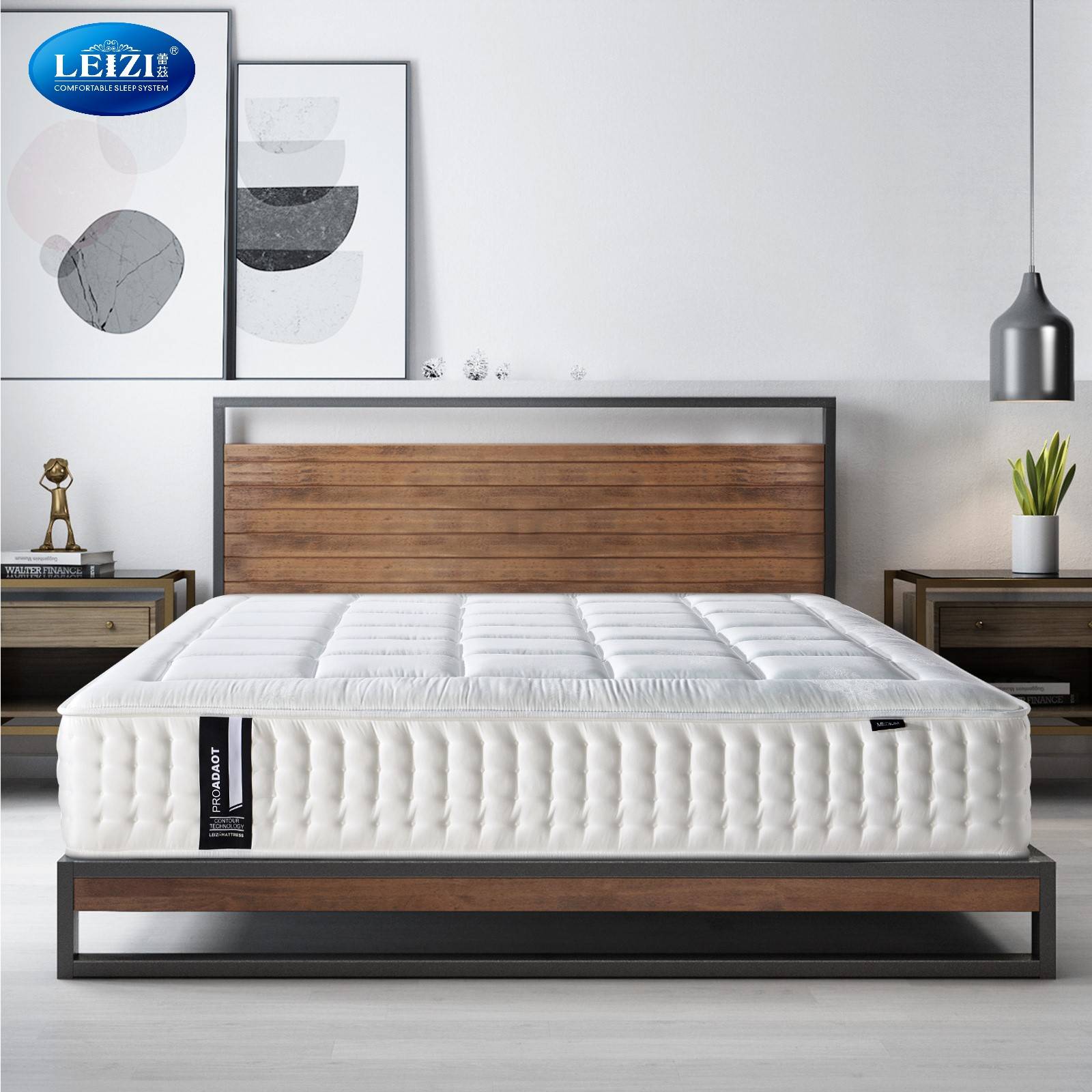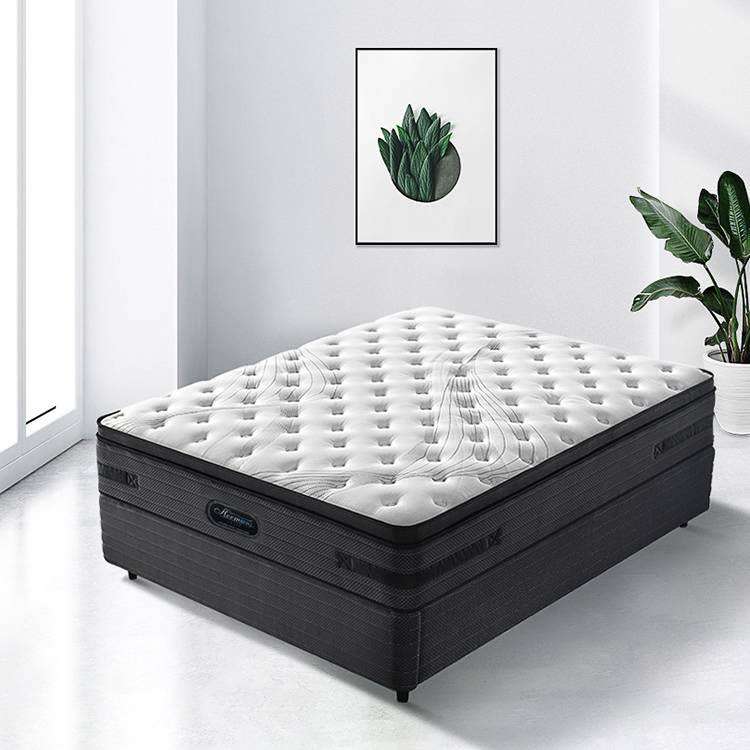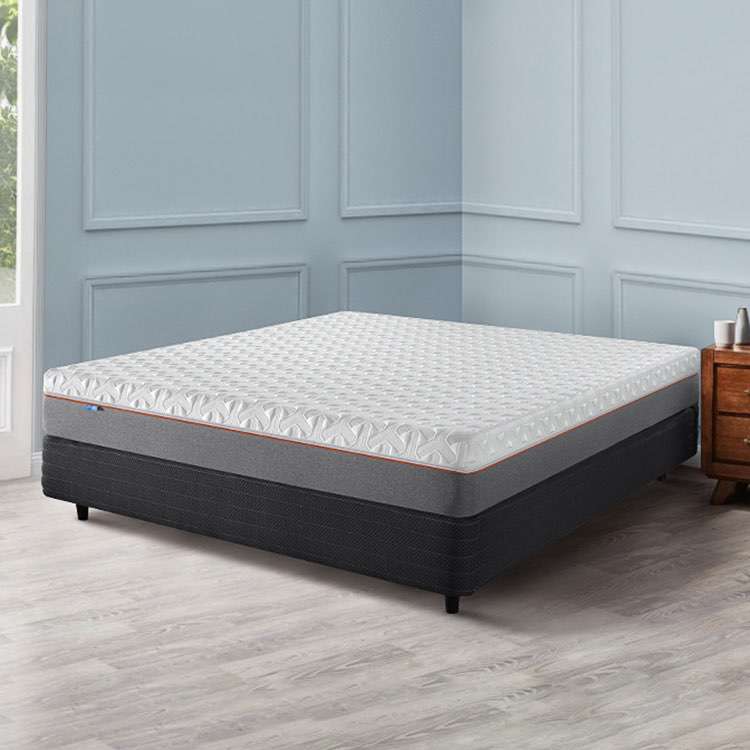How Long Do Mattresses Last? Signs Of Mattress Replacement
 FOSHAN LEIZI FURNITURE CO., LTD
FOSHAN LEIZI FURNITURE CO., LTD  April 30,2024
April 30,2024
A fundamental question that resonates with us all – how many years of restful nights can we expect from our cherished mattresses? As we navigate through mattress lifespan, we will not only scratch the surface but dive deep, uncovering the multifaceted aspects that influence it. Our expedition will span the panorama of various mattress types, each with its distinctive lifecycle, and we will become adept at deciphering the subtle indicators that gently hint at the right time for a renewal.
Therefore, LEIZI Furniture is dedicated to uncovering the essence of mattress lifespan.
How Long Should a Mattress Be Used For?
The quest for an optimum mattress lifespan is a pursuit that often leads us through the maze of comfort, quality, and value. "How long do mattresses last?" is akin to inquiring about the ideal shelf life of a favorite book – it depends on various factors and personal preferences.
In general, a mattress is a long-term investment, and while it doesn't come with an explicit expiration date, its effectiveness gradually evolves over time. The common consensus among experts is that the average mattress lifespan ranges from 7 to 10 years. However, this is merely a benchmark, and the actual duration can vary widely based on several influential factors.
One paramount element is the quality of the mattress itself. A well-constructed custom comfort mattress, crafted from durable materials, tends to stand the test of time more effectively. High-quality memory foam, latex, and even certain hybrid mattresses are designed to offer enduring support and comfort.
Another pivotal factor is the frequency of use. A mattress in a master bedroom, subjected to nightly slumber, naturally endures more wear than one in a guest room that's used less frequently. Consider, too, the weight it supports – heavier individuals might find their mattresses require more frequent replacement due to increased strain.
Moreover, the environmental conditions play a crucial role. Humidity and temperature fluctuations can impact the mattress's materials, potentially accelerating wear and tear. Additionally, the overall care and maintenance – the use of mattress protectors, regular cleaning, and proper rotation – contribute significantly to its longevity.
In essence, while a precise answer to "How long do mattresses last?" might be elusive, an attentive blend of quality, usage patterns, environmental conditions, and maintenance practices collectively define the answer. Embracing these factors can not only extend mattress lifespan but also enhance your overall sleep experience, ensuring that every night remains a restorative journey.
Factors Affecting Mattress Lifespan
The mattress lifespan isn't a linear equation; rather, it's a symphony of interconnected elements that determine how long it will remain a cozy haven for peaceful slumber. Let's unravel the factors that choreograph the ballet of mattress durability.
1. Quality of Materials: The raw materials used in crafting a mattress wield a significant influence on mattress lifespan. High-quality foams, natural latex, and advanced coil systems are more resilient in custom comfort mattresses, withstanding years of use without compromising on comfort or support.
2. Frequency of Use: Just as a favorite pair of shoes experiences wear over time, a mattress too bears the weight of countless nights, The mattress lifespan is also decreasing. A mattress in a primary bedroom, experiencing nightly use, may wear out faster than one in a guest room.
3. Weight Distribution: Your body weight and sleeping position directly impact mattress lifespan. Heavier individuals exert more pressure on the mattress, potentially leading to faster deterioration, especially if the mattress isn't designed to handle the load, that's why some people opt for custom comfort mattresses.
4. Support System: The foundation on which a mattress rests is a critical aspect. A traditional box spring, slats, adjustable bases – each has a unique effect on how a mattress wears. A well-matched support system can enhance mattress lifespan by promoting even weight distribution.
5. Maintenance Practices: Regular maintenance can be likened to nourishment for mattress lifespan. Flipping and rotating your mattress (if double-sided) helps prevent uneven wear. Investing in a mattress protector safeguards against spills, stains, and allergens, while periodic cleaning maintains freshness.
6. Cleaning and Care: It's essential to follow manufacturer guidelines for cleaning and care. Excessive moisture during cleaning or using inappropriate cleaning agents can damage the materials, reducing the mattress lifespan.
In summary, mattress lifespan is a harmony of elements, where quality, usage, support and care dance together. Understanding these factors empowers you to make informed choices when it comes to investing in a new mattress and prolonging mattress lifespan. By mastering the symphony of mattress lifespan, you ensure that every night's rest continues to be a sanctuary of comfort and rejuvenation.
Lifespan of Different Mattress Types
Different mattress types possess distinct qualities that determine mattress lifespan.
1. Custom Comfort Mattresses:
Custom comfort mattresses, tailored to individual preferences, are a blend of science and slumber. These specialized mattresses, often constructed from high-quality materials, can be expected to provide optimal support and comfort for around 8 to 10 years. The meticulous design and attention to detail that go into crafting these mattresses contribute to their mattress lifespan.
2. Pocket Spring Mattresses:
Pocket spring mattresses are renowned for their responsiveness and localized support. With proper care and maintenance, a well-constructed pocket spring mattress can serve you faithfully for approximately 7 to 10 years. However, factors such as the gauge of the springs and the overall quality of materials play a significant role in determining mattress lifespan.
3. Memory Foam Mattresses:
Memory foam mattresses, beloved for their contouring abilities, can offer a peaceful night's sleep for about 7 to 10 years. The quality of the foam itself, its density, and its response to temperature fluctuations all influence how well it withstands the test of time.
4. Latex Mattresses:
Latex mattresses, derived from natural or synthetic latex, are celebrated for their eco-friendly nature and resilience. A well-crafted latex mattress can accompany you on your sleep journey for approximately 8 to 12 years. Natural latex tends to have a longer mattress lifespan compared to synthetic variants, while Dunlop latex is known for its durability.
5. Innerspring Mattresses:
Traditional innerspring mattresses, known for their coil support systems, offer comfort and bounce. In general, innerspring mattresses have a mattress lifespan of 6 to 8 years. However, factors such as coil count, gauge, and the quality of upholstery layers can influence how well it holds up over time.
In conclusion, the mattress lifespan of various mattress types is a tale woven from the threads of construction, materials, and usage. Each type offers a unique sleep experience, and understanding their anticipated mattress lifespan equips you with the knowledge to make an informed decision that aligns with your comfort and longevity preferences.
Signs Indicating the Need for Replacement
Here are the telltale signs that gently nudge you towards considering a new mattress:
1. Sagging and Indentations: Over time, mattresses can develop noticeable sagging or body indentations where you sleep. If you find yourself sinking into your mattress and struggling to find a comfortable position, it might be a sign that the support has worn out, it also shows that the mattress lifespan is getting less and less.
2. Uneven Surface: If you notice lumps, bumps, or unevenness when you run your hand over the mattress, it's a sign that the internal structure might be compromised, affecting both comfort and support, it also shows that the mattress lifespan is getting less and less.
3. Aches and Pains: Waking up with new or intensified aches and pains that gradually fade during the day might suggest your mattress is no longer providing adequate support for your body's needs, it also shows that the mattress lifespan is getting less and less.
4. Creaks and Noises: If your once-silent mattress is now singing a chorus of creaks and squeaks every time you move, it's an indication that the internal components are undergoing wear and tear, it also shows that the mattress lifespan is getting less and less.
5. Age: While not a definitive factor, the mattress lifespan is an important consideration. If you've had it for 8 to 10 years, it's likely nearing the end of mattress lifespan.
In essence, a mattress is more than just a piece of furniture – it's an integral part of your daily well-being. Recognizing these signs and listening to your body's cues will guide you towards making the right decision for a rejuvenating sleep experience. Just as seasons change, so too does the time for a new mattress to ensure your rest remains serene and refreshing.
Tips to Extend Mattress Lifespan
Here are some practical strategies to extend the mattress lifespan:
1. Rotate and Flip Regularly: To prevent uneven wear, rotate your mattress 180 degrees every three to six months. If your mattress is double-sided, flip it over as well. This helps distribute your body weight more evenly, reducing the likelihood of sagging in specific areas, can extend the mattress lifespan.
2. Invest in a Mattress Protector: A quality mattress protector acts as a barrier against spills, stains, and dust. It shields the mattress from moisture and allergens, preventing premature wear and tear, can extend the mattress lifespan.
3. Optimal Support: Ensure your mattress has the right support system, be it a box spring, slats, or an adjustable base. The right foundation promotes even weight distribution and reduces strain on the mattress.
4. Practice Good Hygiene: Regularly clean your mattress by vacuuming it to remove dust and dirt. For spills or stains, follow the manufacturer's cleaning instructions. Maintaining a clean mattress environment can contribute to mattress lifespan.
5. Use a Mattress Topper: A mattress topper can act as an additional layer of protection, absorbing some of the daily wear and tear, can extend the mattress lifespan.
6. Rotate Sleep Positions: Changing your sleep position every so often can prevent excessive wear on specific areas of the mattress. For instance, if you usually sleep in the same spot, try shifting to different areas of the bed.
Incorporating these practices into your mattress care routine can significantly prolong mattress lifespan, ensuring that your investment continues to provide the comfort and support you need for restful nights.
Conclusion:
A comprehensive exploration into the enigmatic realm of mattress lifespan, understanding the factors influencing it and recognizing the signs of its twilight days can empower you to make informed decisions. Recognizing signs such as sagging, discomfort, and allergies, among others, indicates the need for replacement. To extend mattress lifespan, periodic rotation, the use of mattress protectors, proper support and other practices play pivotal roles. By understanding these insights and applying recommended strategies, you can ensure that your mattress remains a haven of restful sleep for years to come.

FAQ
1. How long do mattresses last?
A mattress lifespan lasts around 7 to 10 years, although this can vary based on factors like quality, usage, and maintenance.
2. What factors influence mattress lifespan?
Several factors affect how long do mattresses last, including the quality of materials, frequency of use, weight distribution, support system and maintenance practices.
3. What's the lifespan of different mattress types?
Custom comfort mattresses: 8 to 10 years
Pocket spring mattresses: 7 to 10 years
Memory foam mattresses: 7 to 10 years
Latex mattresses: 8 to 12 years
Innerspring mattresses: 6 to 8 years
4. What are the signs that a mattress needs replacement?
Signs include sagging, indentations, an uneven surface, increased aches and pains, creaks and noises, restless sleep, mattress age (around 8 to 10 years), and changing lifestyle needs.
5. How to extend the mattress lifespan?
To prolong mattress lifespan, consider rotating and flipping it regularly, using a mattress protector, ensuring optimal support, using a mattress topper, rotating sleep positions, considering weight distribution, and avoiding folding the mattress.











